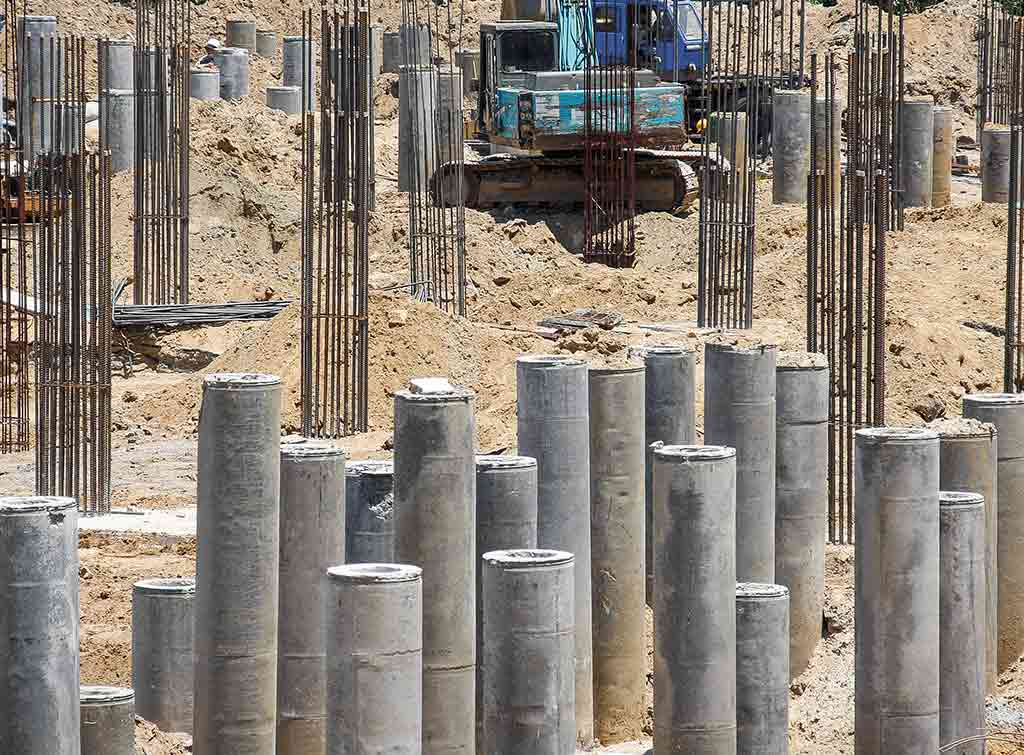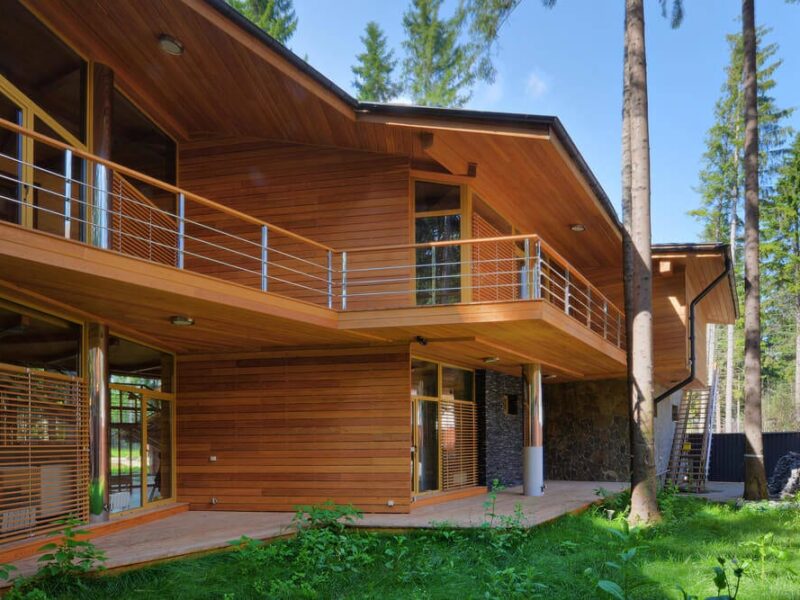Choosing between piling and footing depends on factors like soil strength, building weight, cost, and installation time. Piling is ideal for weak or unstable soil and heavy structures, as it reaches deep to find stronger ground and can support heavier loads.
However, it’s often more expensive and complex to install, requiring specialized equipment. Footings are simpler and cheaper, suitable for stable soil and smaller buildings. They’re faster to install but may not support very heavy structures as well as piling.
Ultimately, the best choice depends on site conditions, budget, and structural requirements. Consulting with engineers helps determine the most suitable foundation for a specific project.
What is Piling?
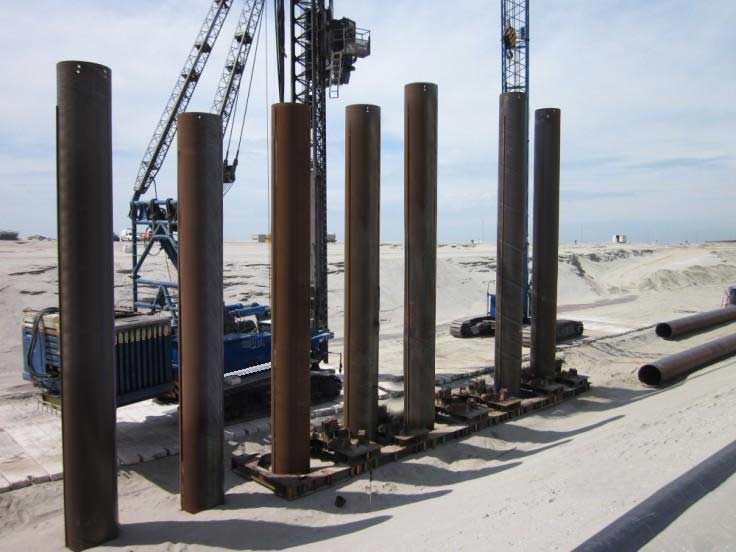
Piling is a fundamental technique in construction used to provide structural support for buildings, bridges, and other structures. It involves driving columns or piles deep into the ground to transfer the load of the structure to deeper, more stable soil layers or bedrock.
Further, it is crucial in areas where shallow foundations are inadequate due to poor soil conditions, high water tables, or heavy loads.
The key components of piling can be summarized as follows
Piling Rig
The piling rig consists of several key components crucial for its operation. The base structure serves as the foundation, offering stability and support to the entire machine.
Typically mounted on tracks or wheels, it enables easy movement across construction sites. Positioned atop this base structure is the mast or boom, a versatile vertical or inclined structure responsible for holding the drilling or piling equipment.
It can be adjusted, raised, lowered, and rotated to precisely position the tools as needed. A winch system is integral, facilitating the controlled raising and lowering of drilling tools, casing, or piles into the ground. Complementing these components is the power unit, which provides the necessary hydraulic, pneumatic, or mechanical power to operate the rig’s functions effectively.
This unit comprises engines, pumps, and motors, ensuring the seamless execution of piling operations. Together, these components form the backbone of the piling rig, essential for the successful completion of various construction projects requiring deep foundations and structural support.
Pile cape
In some cases, a pile cap is used at the top of one or more piles. This spreads the load from the structure evenly across multiple piles and provides a level surface for the building to sit on.
Auxiliary Equipment
Two important parts of piling are the hammer or vibrator and casing. The hammer or vibrator helps push or shake piles into the ground. It’s like a big tool that gives the piles a good push or vibration to make them go deep into the soil.
On the other hand, the casing is like a protective tube that supports the sides of the hole while drilling. It stops the soil from caving in, making sure the drilling process goes smoothly and safely. These parts work together to make sure the piles go where they need to be, providing a strong foundation for buildings and other structures.
What Are The Advantages & Disadvantages Of Pilling?
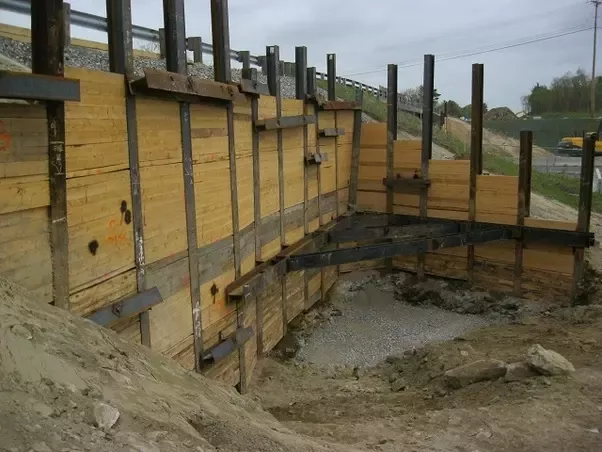
Piling offers several advantages and disadvantages in construction:
Advantages
- Suitable for weak soil conditions where a shallow foundation wouldn’t work.
- Transfers load to stronger soil layers at greater depths.
- Ideal for structures with high weight requirements like tall buildings or bridges.
Disadvantages
- More expensive compared to footings due to material and labor costs.
- Installation can be noisy and disruptive to the surrounding area.
- Not suitable for all soil types, particularly very hard bedrock which can be difficult to penetrate.
What Is Footing?
Footing, in construction, refers to the broadened base at the bottom of a shallow foundation. It acts like the foot of the foundation, spreading the weight of the structure over a larger area of soil to ensure stability.
While a footing itself isn’t a complex structure, there are a few key components that contribute to its proper function:
Subgrade (Soil Bearing Surface)
The subgrade refers to the natural ground surface upon which the footing of a structure rests. Before constructing the footing, it’s essential to prepare the subgrade properly.
Moreover, this typically involves compacting the soil to increase its density and leveling it to ensure a uniform and stable base. Proper preparation of the subgrade helps prevent settling or shifting of the footing over time, ensuring the stability and longevity of the structure.
Footing Material
Concrete is the most commonly used material for footings due to its strength, durability, and ability to resist compressive forces. However, in specific situations or for certain types of structures, other materials such as masonry or treated timber may be used.
The choice of footing material depends on factors such as the weight the footing needs to support. It also considers the soil-bearing capacity and local building codes and regulations.
Footing Reinforcement (Optional)
In cases where the footing needs additional strength to handle heavy loads or weak soil conditions, steel rebar is embedded within the concrete. This rebar helps distribute stress and prevent cracking.
Drainage System (Optional)
Depending on the soil type and climate, a drainage system might be incorporated around the footing. This could involve perforated pipes or crushed stone layers to help manage water flow and prevent moisture buildup around the foundation.
Footing Depth
The depth of the footing excavation depends on several factors like soil strength, frost depth in the region, and local building codes. The goal is to place the footing below the frost line to prevent movement caused by freezing and thawing cycles.
What Are The Advantages & Disadvantages Of Footing?
Footing offers several advantages and disadvantages in construction:
Advantages
- More cost-effective than piling for suitable soil conditions.
- Simpler and faster to install compared to deep foundations.
- Well-suited for stable soil with good bearing capacity (ability to support weight).
Disadvantages
- Limited load-bearing capacity compared to piling.
- Not suitable for weak soils or expansive clays that can move significantly with moisture changes.
- May require deeper excavation depending on the soil conditions and frost depth (to prevent movement due to freezing and thawing).
What Are The Differences Between Piling And Footing?
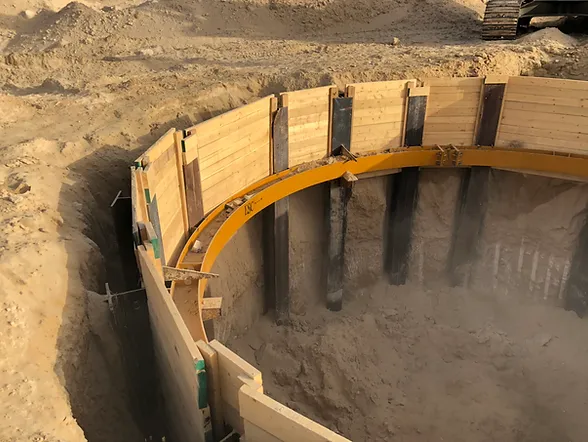
| Aspect | Piling | Footing |
| Purpose | Provides deep foundation support in areas with weak soil or high water table | Distributes structural loads to the soil below, supporting the structure above |
| with weak soil or high water table | below, supporting the structure above | |
| Type of Foundation | Deep foundation | Shallow foundation |
| Depth | Driven or drilled deep into the ground, often reaching bedrock or stable soil layers | Typically shallow, extending below the |
| Width | Diameter varies based on pile type and load requirements | Typically wider than the structure it supports, providing stability and loaddistribution |
| Load Capacity | Can bear heavy vertical and lateral loads due to end-bearing or friction mechanisms | Limited load-bearing capacity, suitable for lighter structures and loads |
| Suitability for Soil | Suitable for soft or weak soils, high water tables, and areas with poor soil conditions | Suitable for stable soils or areas with minimal soil disturbance |
| Construction | Requires specialized equipment and expertise, such as pile drivers or drilling rigs | Generally simpler construction process, involving excavation, formwork, and pouring concrete |
| Cost | Typically more expensive due to specialized equipment and materials, and longer construction time | Generally less expensive compared to piling, but costs can vary based on site conditions and design requirements |
| Environmental Impact | May have environmental implications such as noise, vibration, and disturbance to wildlife habitats | Minimal disturbance to surrounding soil and vegetation, compared to piling |
| Versatility | Can be customized to suit various soil conditions and project requirements | Limited adaptability to challenging soil conditions and high water tables |
Choosing Between Piling and Footing
Choosing between piling and footing depends on various factors including soil conditions, structural requirements, project budget, and site constraints. Here’s a breakdown to consider:
| Factor | Piling | Footing |
| Soil Condition | Suitable for weak or unstable soil | Suitable for stable and good bearing capacity soil |
| Structure Weight | Suitable for heavy structures | Suitable for smaller, low-rise structures |
| Cost | More expensive | More cost-effective |
| Installation | Complex and time-consuming | Simpler and faster |
| Suitability for Slopes/Water | Good | Not ideal |
Soil Conditions
Piling is preferable when dealing with weak or unstable soil that cannot adequately support traditional shallow footings. Piles can reach deeper into the ground to find more stable soil layers, providing better support for the structure.
Footings may be suitable for sites with relatively stable soil conditions where the natural bearing capacity of the soil is sufficient to support the intended loads.
Structural Requirements
Piling is often chosen for structures with heavy loads or tall buildings where deep foundations are required to transfer loads to stable soil layers.
Footings are typically used for smaller structures or where the loads are not excessively heavy, such as residential homes or low-rise buildings.
Project Budget
Piling can be more expensive than footings due to the additional materials, labor, and equipment required for installation.
Footings may offer cost savings for projects with less stringent load requirements or where soil conditions permit the use of shallow foundations.
Site Constraints
Piling may be preferred in urban areas or sites with limited space where deep foundations can be installed without extensive excavation.
Footings may be more practical for sites with easy access and sufficient space for excavation and construction.
Additional Considerations
The presence of a water table or bedrock can significantly impact the selection of the foundation type. The depth of the water table and the presence of bedrock may necessitate adjustments to the foundation design to ensure stability and longevity.
Environmental impact is another important consideration. Piling operations can generate noise and vibration, which may have a larger environmental footprint compared to footing installation. Further, it’s crucial to assess and mitigate any potential environmental effects during construction.
Moreover, local building codes and regulations should always be consulted before finalizing the foundation design. Building codes often specify requirements for foundation design based on regional factors such as soil conditions, seismic activity, and environmental considerations.
Adhering to these codes ensures that the chosen foundation type meets safety and regulatory standards for the specific location.
FAQ’s
What is the difference between a footing and a piling?
Footing involves creating a wider base to distribute the weight of a structure evenly over the soil, while piling involves driving vertical columns or piles deep into the ground to support a structure.
What is the difference between a footing and a pile cap?
A pile cap is typically of greater depth than a comparable pad footing, as it is subject to higher bending moments and shear forces. The increased depth of the pile cap provides greater rigidity, allowing it to evenly spread the load to all piles in the group.
Final Words
Whether to choose piling or footing depends on factors like soil strength, building weight, and budget. Piling is great for weak soil and heavy buildings, but it’s pricier and more complex to install.
On the other hand, footing is simpler and cheaper, suitable for stable soil and smaller structures. Both have their pros and cons, so it’s crucial to consider site conditions and project needs.
Consulting with experts can help make the best decision for a strong and stable foundation that suits the project’s requirements and budget.

